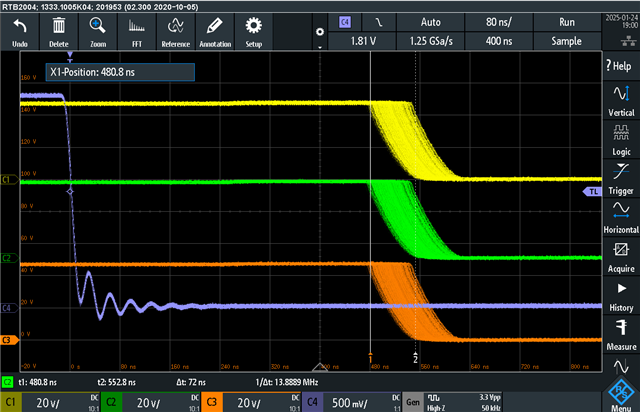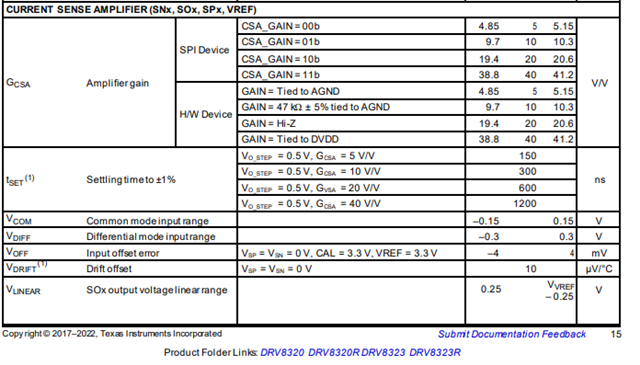Other Parts Discussed in Thread: DRV8334,
Tool/software:
Hello,
I am using the DRV8323S MOSFET driver for a motor controller. I see a noticeable jitter of around 70ns on the outputs of the driver IC, even when I use a fixed PWM (fixed frequency and duty-cycle) as input.
This constant change in propagation delay causes some noise in the motor winding currents, which then induces mechanical noise in my application. I am using 48V bus voltage and 3-PWM mode. Most of the setting are at default. I have played with some of the driver's settings (change of dead time, driver strength, 6-PWM mode), but the change in the jitter was very little.
I think the problem might come from the IC's internal clock, which is used to synchronize the input signals and generate internal timings. Unfortunately, the datasheet does not contain much information on this.

C1: Output H-Bridge of Phase A
C2: Output H-Bridge of Phase B
C3: Output H-Bridge of Phase C
C4: Input signal of all phases (all connected together)
When I searched for this phenomenon, I came across several forum posts describing similar things. For example this one:
My questions now are:
1. is there a way to reduce this noise? (for example by disabling the internal synchronisation)
2. if not, is there a way to synchronize the driver's internal clock with my system clock to get a predictable behavior?
3. are there alternative driver ICs without this issue?
Best regards,
Mathias



